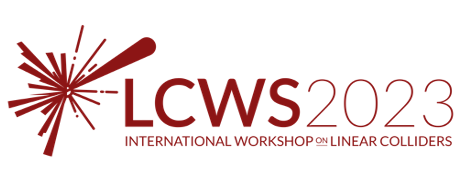Speaker
Description
While dimuonium (mu+mu-) -- the ``smallest QED atom" -- has not yet been observed, it is of utmost fundamental interest. By virtue of the larger mass, dimuonium has greater sensitivity to beyond the standard model (BSM) effects than its cousins positronium or muonium, both discovered long ago, while not suffering from large QCD uncertainties.
Dimuonium atoms can be created in e+e- collisions with large longitudinal momentum, allowing them to decay a small distance away from the beam crossing point and avoid prompt backgrounds. We consider two opportunities for dimuonium production in the US. First, there is a unique cost-effective and fast-timeline opportunity for copious production of mu+mu- atoms at the production threshold via a modest modification of existing Fermilab Accelerator Science and Technology (FAST) facility to arrange collisions of 408 MeV electrons and positrons at a 75 degree angle. This compact 23 m circumference collider (DIMUS) will allow for precision tests of QED and open the door for searches for new physics coupled to the muon. The FAST facility is perfectly suited for DIMUS as there are existing SRF accelerators and infrastructure, capable of producing high energy, high current electron and positron beams, sufficient for O(10^32) cm-2s^-1 luminosity and O(0.5 million) dimuons per year. The expansion will require installation of a second SRF cryomodule, positron production and accumulation system, fast injection/extraction kickers and two small circumference intersecting rings. An approximately meter-sized detector with several layers of modern pixelated silicon detector and crystal-based electromagnetic calorimeters will ensure observation of the decays of dimuonium to electron-positron pairs in presence of the Bhabba scattering background. An expansion of the system to include solenoidal magnet outside of the calorimeter system, a layer of steel shielding behind the magnet, and a set of dedicated muon detectors would extend the physics program of DIMUS to include precision studies of rare processes with muons, pions, and eta-mesons produced in e+e- collisions. Another intriguing opportunity is to employ advanced plasma accelerators to arrange collisions of e+ and e- beams at the dimuonium production threshold cme. Such a compact collider might have sufficient luminosity for the dimuonium discovery and initial studies.



